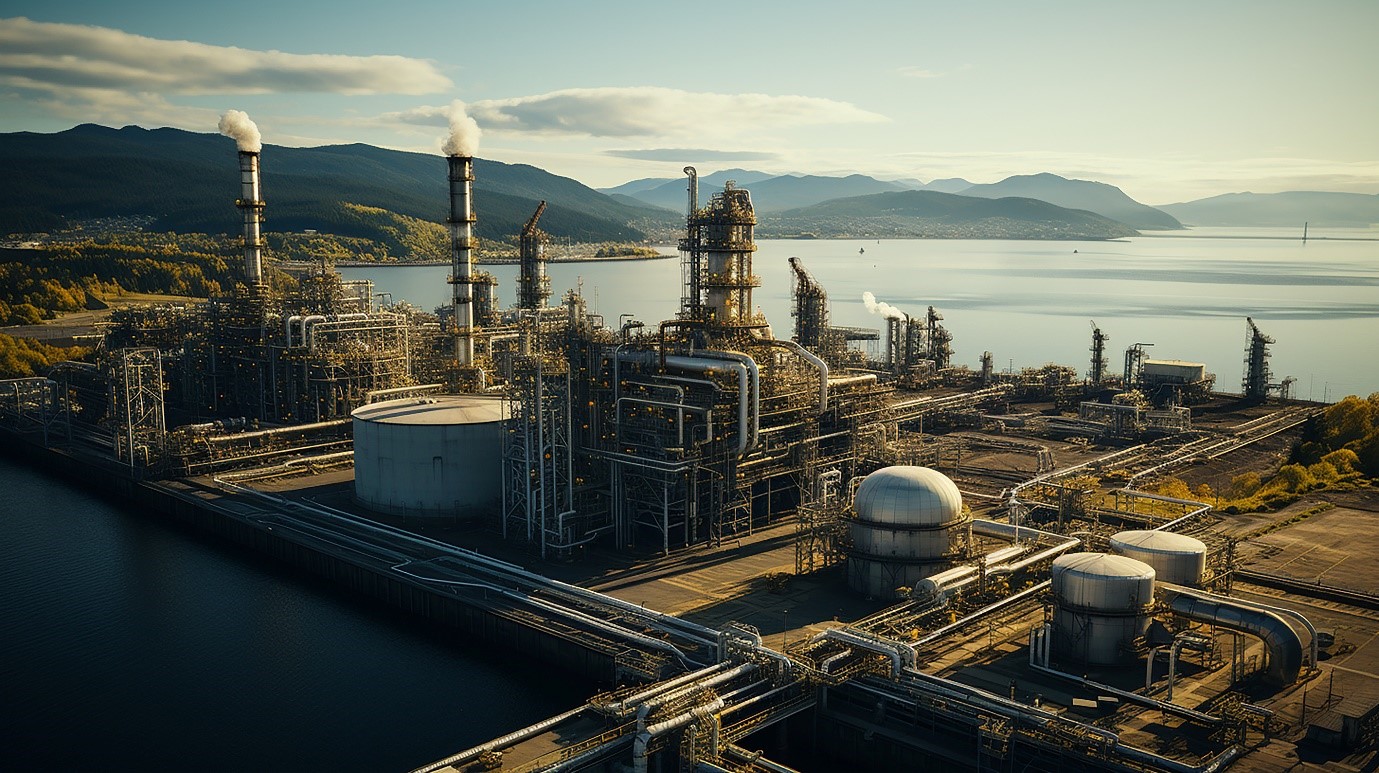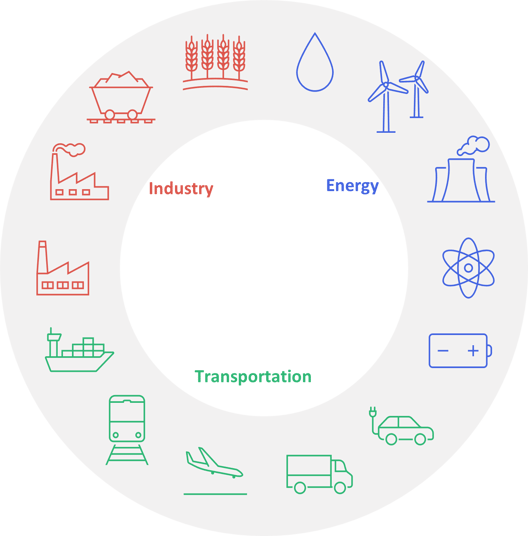What's New - October 2025
Each month, we highlight the latest enhancements across the PLEXOS® platform to help you model faster, plan smarter, and collaborate more...

As global awareness of environmental sustainability grows, the topic of decarbonization has rapidly become a central focus in discussions within the energy, transportation, and industrial sectors. Major contributors of global greenhouse gas (GHG) emissions now grapple with the challenge of adapting to the milestones set by global agreements. Yet, actualizing these commitments is no straightforward task. It demands meticulous crafting of strategies, an understanding of the intricate web of sectors, and the deployment of advanced tools to navigate this complex terrain. This piece explores the intricacies of crafting optimal decarbonization pathways, and the synergy between various economic sectors, and introduces you to the capabilities of PLEXOS in shaping a net zero future.
Did you know the energy sector contributes to 73% of global greenhouse gas emissions? Are you prepared for a net-zero future? Let PLEXOS guide you on your journey to sustainability. Contact our experts now for personalized guidance on your decarbonization journey.
Decarbonization is becoming an urgent focus of energy, transportation, and industrial sectors---the three major contributors to global greenhouse gas (GHG) emissions. Following the Paris Agreement and recommendation to limit global warming to the IPCC 1.5ºC scenario, many corporations and governments are making strong commitments to reduce their greenhouse gas emissions by 2030 and achieve net zero emissions (NZE) by 2050. Turning these commitments into action requires effective decarbonization strategies that allow businesses to transform their assets and operations to perform sustainably and efficiently within a net zero economy.
A decarbonization strategy identifies the optimum pathway for a business or broader economy to transition away from fossil-fuel-based operations to achieve net zero emissions:
Developing an optimum decarbonization strategy is often challenging due to the interconnected nature of different sectors, long-term timeframes, and uncertainty about climate, technology, economic and policy scenarios.
Modeling and analysis are essential for understanding impacts of alternative decarbonization pathways and informing business and policy decisions. Some of the key outputs obtained from the analysis of decarbonization pathways are answers to such questions as:
1. What is your optimum pathway to net zero?
Business across all sectors will be seeking to identify their optimum pathway to achieve net zero emissions. An optimum pathway would achieve the carbon reduction targets, with the minimum overall cost and risk.
2. How much do you need to invest to meet your targets?
For effective decarbonization, analysts will need to identify what technologies to invest in and when to invest in them. Considering the long asset-life, asset investment profiles will optimize investment in augmentation of existing technology, replacement with new low-carbon alternatives. The goal is to maximize returns, particularly in GHG reduction.
3. How exposed are you to climate risk?
The state, future, and the timing of the energy transition is uncertain, and so analyzing the uncertainty surrounding alternative scenarios is essential to evaluating future risk. What is the cost of doing business within a future low-carbon economy? Many businesses, producing commodities for sales in markets, will want to continue to deliver a product at a competitive price. Assessing the viability of their operations in a low-carbon economy is paramount. This includes understanding the financial implications and ensuring they can meet product demand effectively.
4. How integral is hydrogen to the decarbonization process?
Hydrogen and other alternative fuels are anticipated to play a key role in the energy transition. Especially for industries heavily dependent on fossil fuels, hydrogen offers a promising decarbonization pathway. Its versatility and potential make it a crucial component in the move toward sustainability.
The majority of GHG emissions are generated by three highly interconnected broad economic sectors.
|
Sectors |
Emissions |
Mitigation |
|
Energy |
Emissions from coal and gas-fired power plants
|
Switch to zero-emission energy sources Leverage energy storage to maximize value of variable renewable energy (VRE) |
|
Transportation
|
Emissions from combustion of fossil fuels for transportation & logistics |
Electrification, alternative fuels, improved energy efficiency |
|
Industrial & Agricultural
|
Emissions from industrial processes that generate emissions directly, as fugitive emissions, or contribute to Scope 2 energy-sector emissions |
Electrification, alternative low-carbon fuels & raw materials, CCUS, circular economy
|
The interconnected nature of these sectors within the broader economy makes it difficult to decarbonize business operations in one sector without considering at least some of its adjacent sectors. Decarbonization actions in one sector could directly or indirectly have an impact on an adjacent sector or could increase competition for limited resources. For example, electrification within transport and industry will increase demand for energy; due to the immense amount of energy currently required to produce hydrogen via electrolysis. Increased electrolysis would increase demand for water. Furthermore, various sectors within industry and transport have multiple intra-sector linkages. A holistic analysis can identify opportunities for synergies through a circular economy, which would be otherwise hidden.
Taking a holistic multisector approach is therefore essential for evaluating decarbonization pathways to explore these interactions and ensure a successful decarbonization strategy. Modeling tools for analyzing decarbonization need the capability to model the various elements that form the overall decarbonization strategy.
In order to evaluate decarbonization strategies, a multisector model needs to consider a number of important components within a single unified framework, in addition to energy generation and distribution, including:
Variable renewable energy generation and energy storage - A Major pathway to decarbonization is the switch from conventional fossil-fuels to renewable electricity for energy. Sizing the capacity and mixture of renewable energy and storage forms a major part in determining an optimal investment strategy.
Fuel switching and finding alternatives to natural gas and coal - Modeling the production and usage of alternative fuels, such as hydrogen, ammonia, and biofuels, forms a key part of analysis of alternative pathways. Models need to be capable of representing various production pathways for alternative fuels, and their storage.
Modeling transportation - Transportation of fuels, raw materials and products has an impact on both industrial and energy sectors. Consideration of the location of facilities and the carbon emissions from transportation of commodities within a system is necessary to fully capture the carbon footprint.

Modeling industrial processes - When planning decarbonization, considering how energy is consumed is equally as important as how it is generated. A decarbonization model needs to be able to represent the processes and facilities that consume energy and fuels to produce goods. Heavy industries such as mining & refining, cement production, and steel manufacturing not only need to consider alternative energy and fuels, but also need to consider alternate production pathways, leveraging new or emerging technology.
Modeling CO2 as a commodity - Traditionally, CO2 has been seen as an emissions by-product. Multi-sector decarbonization analysis offers the opportunity to explore synergies between hard-to-abate industrial processes, carbon capture and storage (CCS), and carbon-negative processes that use carbon as an input. Considering CO2 as a commodity that can flow across sector boundaries and can be traded within markets or consumed by other processes or facilities, which goes beyond simple reporting of emissions factors.
Evaluating circular economy flows - Challenged with minimizing consumption of limited raw resources or replacing carbon intensive pathways for production, many industries are turning to recycling and circular economy to minimize the environmental impact of their production activities. Turning the waste from one sector into an input into another can add value to an otherwise wasted commodity, which reduces waste and consumption of raw materials. Evaluation of potential circular pathways encourages minimization of the overall environmental footprint, reduction of waste and increased value for participating sectors.
Multisector analysis is a core feature of PLEXOS, which provides a unified modeling platform that seamlessly integrates electricity, gas, water, transport, and end-use sectors. Modelers can easily integrate their energy generation and transmission with gas and downstream production facilities.
PLEXOS Universal library extends the modeling capability of PLEXOS into energy-adjacent sectors, such as mining and agriculture. The extensible library supports custom Commodities, Facilities, Storages, and transportation networks to be defined by the user. Some example applications being considered with PLEXOS include:
This powerful framework enables users to define existing pathways and the impact of alternative pathways through augmented processes and evaluate the many complex interactions between industrial processes, energy and transportation sectors and optimize the investment across their asset portfolio to achieve target carbon reduction trajectory to NZE.
PLEXOS capability to model long-term and short-term horizons is ideally suited to modeling decarbonization. First, long-term analysis answers the questions related to asset investment over the years to 2050 and beyond. Medium-term and short-term modeling horizons can assist in the evaluation of system performance, considering the intra-day behavior of variable renewable energy (VRE) and energy storage, as well as the seasonal impact of water availability for hydrogeneration, or seasonality in operations or market demand.
Climate risk models can be developed by combining the Universal modeling and stochastic analysis capabilities of PLEXOS. Monte Carlo and stochastic optimization features are built into the PLEXOS simulation and optimization engine and enable you to model the uncertainty with regards to renewable energy generation and other sources of uncertainty, such as market price uncertainty. PLEXOS scenario features allow models to be created that can consider the various climate and policy scenarios to assess possible futures.
Using these features together enables modelers to develop techno-economic models to evaluate decarbonization of almost any sector and provides a powerful platform for identifying optimum pathways to decarbonize your asset portfolio; or predict the broader impact of policy or climate outcomes on broader economies and markets.
In the transformative journey towards a sustainable future, understanding decarbonization is crucial. With the advanced capabilities of PLEXOS guiding various economic sectors, we provide a clear path to a net zero future.
Want to dive deeper into decarbonization strategies? Contact our expert team now to shape a brighter, sustainable future.
An energy modeling platform that’s more customizable, more connected,
and provides more insights than ever before. Make the switch to PLEXOS today.
Each month, we highlight the latest enhancements across the PLEXOS® platform to help you model faster, plan smarter, and collaborate more...
With PLEXOS® Intelligence, teams can go from simulation to strategy faster, without delays, handoffs, or rework. It transforms raw model outputs...
1 min read
At Energy Exemplar, we are pleased to introduce two new products and deployment methods designed to enhance your energy modeling experience. These...